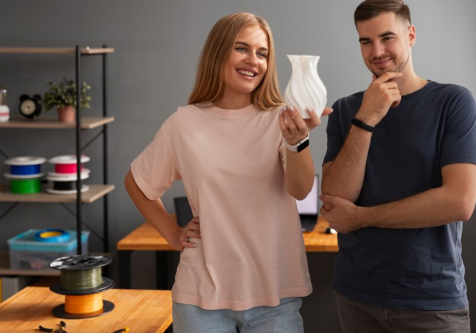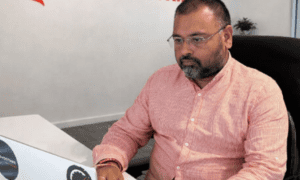Introduction: Bridging the Vision Gap in Trophy Design
In the intricate world of custom trophy creation, the journey from a nascent idea to a tangible symbol of achievement is often complex. It requires not only artistic vision and technical skill from the trophy maker but also a clear and effective line of communication between the designer and the client. The success of a bespoke award hinges significantly on how well design concepts are articulated, understood, and refined throughout the process. Misunderstandings can lead to delays, dissatisfaction, and a final product that doesn’t quite capture the intended spirit of recognition.
This article serves as a comprehensive guide for both trophy makers and clients, outlining strategies and best practices for communicating design ideas with precision and clarity. By fostering a collaborative environment built on mutual understanding, the creation of truly meaningful and impactful awards becomes a seamless and rewarding experience for all involved.
Understanding the Client’s Vision: The Foundation of Effective Communication
The cornerstone of any successful custom trophy project is a profound understanding of the client’s vision. Before any design work begins, it is imperative to delve deep into their objectives, the nature of the achievement being celebrated, and the message they wish to convey. This initial phase sets the trajectory for the entire design process, ensuring that the final product aligns perfectly with expectations.
The Importance of a Comprehensive Design Brief
A well-structured and comprehensive design brief is the bedrock of effective communication. It serves as a formal document outlining all critical aspects of the project, leaving no room for ambiguity. For trophy makers, this brief should capture not just the functional requirements (e.g., size, material, budget) but also the emotional and symbolic aspirations of the client. Key elements to include are:
- Purpose of the Award: What achievement does it recognise? What message should it convey?
- Target Audience: Who will receive the award? What are their demographics and preferences?
- Brand Identity: How should the trophy reflect the client’s brand or organisation’s values?
- Aesthetic Preferences: Are there any specific styles, colours, or shapes the client prefers or wishes to avoid?
- Timeline and Budget: Clear parameters for project completion and financial investment.
- Logistics: Quantity, engraving details, packaging, and delivery requirements.
Clients should be encouraged to provide as much detail as possible, including examples of awards they admire or dislike, and any relevant imagery that conveys their desired aesthetic.
Active Listening and Probing Questions
Beyond the written brief, active listening and strategic questioning are invaluable tools for trophy makers. During initial consultations, it’s crucial to listen intently to the client’s verbal cues, unspoken desires, and underlying motivations. Asking open-ended questions can uncover nuances that might not be explicitly stated in the brief. For instance, instead of just asking for preferred colours, inquire about the emotions they wish to evoke. Instead of just asking for a shape, explore the symbolism they associate with the achievement. This iterative process of questioning and clarification ensures a shared understanding of the project’s essence, building a strong foundation for the creative journey ahead.
Visual Communication: Showing, Not Just Telling
In design, a picture truly is worth a thousand words. While verbal descriptions and written briefs are essential, visual communication is paramount when conveying abstract design concepts. Trophy makers must leverage a range of visual tools to translate their ideas into a format that clients can easily understand and react to. This not only clarifies the design but also engages the client in the creative process, making them feel more invested in the outcome.
Sketching and Conceptual Drawings
Initial sketches and conceptual drawings are often the first visual representations of a trophy idea. These rough, hand-drawn or digitally rendered visuals allow for rapid iteration and exploration of different forms, proportions, and overall aesthetics. They are invaluable for conveying the basic shape and feel of the trophy without getting bogged down in intricate details. This stage encourages open discussion and allows for early adjustments based on client feedback, preventing costly changes later in the process.
3D Renderings and Prototypes
As the design progresses, 3D renderings become indispensable. These highly realistic digital models provide clients with a comprehensive view of the proposed trophy from all angles, showcasing its dimensions, textures, and how light might interact with its surfaces. For complex designs, physical prototypes, even if simplified, offer an unparalleled tactile experience. Holding a prototype allows clients to assess the weight, balance, and overall presence of the award, providing a tangible sense of the final product. This level of visual and tactile representation minimises surprises and builds confidence in the design.
Mood Boards and Material Samples
To convey the overall aesthetic and emotional tone of a trophy, mood boards are highly effective. These curated collections of images, colours, and textures help to establish the desired look and feel, ensuring alignment between the designer’s vision and the client’s expectations. Alongside mood boards, providing actual material samples (e.g., different types of metal, wood, crystal, or acrylic) allows clients to experience the tactile qualities and visual nuances of the proposed materials. This helps them make informed decisions about the finishes and components that will best suit their award.
For those seeking expert assistance in bringing their trophy design ideas to life, consider partnering with Award Makers in Sydney, who excel in translating concepts into stunning realities.
Articulating Design Choices: Explaining the ‘Why’
Once visual concepts have been presented, the next crucial step is to articulate the rationale behind specific design choices. It’s not enough to simply show a design; trophy makers must explain why certain elements were chosen and how they contribute to the overall objective of the award. This intellectual justification elevates the conversation beyond mere aesthetics, demonstrating thoughtful consideration and expertise.
Connecting Design Elements to Client Objectives
Every design element, from the curve of a base to the finish of a material, should ideally serve a purpose rooted in the client’s initial brief. When presenting, explicitly link design features back to the client’s stated goals and the values of the achievement. For example, if the client emphasised innovation, explain how a dynamic, asymmetrical shape reflects forward-thinking. If the award is for long-term service, highlight how a robust, classic material signifies enduring commitment. This direct correlation helps clients understand that the design is not arbitrary but a carefully considered solution tailored to their specific needs.
Explaining Material and Color Psychology
As explored in the previous article, colours and materials carry significant psychological weight. When discussing these aspects of the design, educate the client on the subtle messages they convey. Explain why a particular shade of blue was chosen to represent trust and stability for a corporate award, or how the weight of a solid crystal trophy reinforces the gravitas of a lifetime achievement. By providing this psychological context, trophy makers empower clients to make more informed decisions and appreciate the deeper layers of meaning embedded within their custom award. This transparency builds confidence and demonstrates a comprehensive understanding of award design.
Presenting Your Ideas: Strategies for Impact
The presentation of your trophy design ideas is a critical moment. It’s where all the research, creativity, and strategic thinking culminate. A compelling presentation can transform a good design into a winning proposal, securing client buy-in and enthusiasm. It’s about more than just showing pretty pictures; it’s about telling a story and guiding the client through your creative process.
Structuring Your Presentation
A well-structured presentation is clear, concise, and persuasive. Begin by reiterating the client’s initial brief and objectives, demonstrating that you’ve listened and understood their needs. Then, introduce your design concept, explaining the inspiration and overarching vision. Walk the client through the visualisations, highlighting key features and explaining how each element addresses their requirements. Conclude with a summary of the benefits and a clear call to action. Consider using a narrative flow that builds excitement and confidence in your proposed solution. Keep it focused and avoid overwhelming the client with too much information at once.
Handling Feedback and Revisions Constructively
Feedback is an integral part of the design process, and how it’s handled can make or break a project. Approach feedback sessions with an open mind and a constructive attitude. Encourage clients to be specific with their comments, asking clarifying questions to understand the root of their concerns. Differentiate between subjective preferences and objective design issues. When revisions are necessary, clearly communicate the proposed changes and how they will address the feedback. Document all decisions and revisions to maintain transparency and avoid future misunderstandings. Remember, the goal is a collaborative refinement that leads to a mutually satisfying outcome.
Building Trust and Collaboration: The Partnership Approach
Effective communication in trophy design extends beyond the initial brief and presentation; it’s about cultivating a relationship built on trust and collaboration. When clients feel they are true partners in the design process, the journey becomes smoother, and the final outcome is more likely to exceed expectations. This partnership approach fosters a sense of shared ownership and mutual respect.
Establishing Clear Communication Channels
Defining clear and consistent communication channels from the outset is vital. Whether it’s regular email updates, scheduled video calls, or a dedicated project management platform, ensure that both parties know how and when to communicate. Respond promptly to inquiries and provide regular progress reports, even if it’s just to confirm that work is ongoing. Transparency about timelines, potential challenges, and milestones helps to manage expectations and keeps the project on track. A well-informed client is a confident client, and confidence is key to a successful collaboration.
Managing Expectations and Timelines
Realistic expectations and clear timelines are crucial for preventing misunderstandings and ensuring client satisfaction. Be upfront about the design process, including the number of revisions, typical turnaround times, and any potential factors that could impact the schedule. If unforeseen challenges arise, communicate them immediately and propose solutions. It’s always better to over-communicate than to leave clients guessing. By setting clear boundaries and managing expectations proactively, trophy makers can build credibility and ensure a positive client experience, even when faced with complexities.
Overcoming Challenges: Common Pitfalls and Solutions
Even with the best intentions, communication breakdowns can occur. Recognising common pitfalls and having strategies to address them is essential for maintaining a smooth design process and ensuring client satisfaction. Proactive problem-solving can turn potential obstacles into opportunities for strengthening client relationships.
Addressing Misunderstandings Proactively
Misunderstandings often arise from assumptions or a lack of clarity. If a client’s feedback seems misaligned with the design, or if there’s a sense of confusion, don’t hesitate to seek clarification. Rephrase their concerns in your own words to confirm understanding. Sometimes, a simple phone call or video conference can resolve issues that might escalate in written communication. Providing visual examples or analogies can also help bridge conceptual gaps. The key is to address any ambiguity immediately and directly, before it leads to frustration or significant rework.
Conclusion: Crafting Shared Success Through Clear Communication
In the realm of custom trophy design, effective communication is not merely a soft skill; it is a critical component of success. For trophy makers, mastering the art of articulating design ideas, understanding client needs, and fostering collaborative relationships is as important as their craftsmanship. By embracing comprehensive briefs, leveraging powerful visual tools, explaining design rationale, and managing expectations proactively, both makers and clients can navigate the creative process with confidence and clarity.
The result is more than just a beautifully designed trophy; it is a shared triumph, a tangible representation of a vision brought to life through clear, consistent, and empathetic communication. Ultimately, the ability to effectively communicate design ideas transforms the trophy creation process into a truly rewarding partnership, culminating in awards that resonate deeply and celebrate achievements with unparalleled impact.































